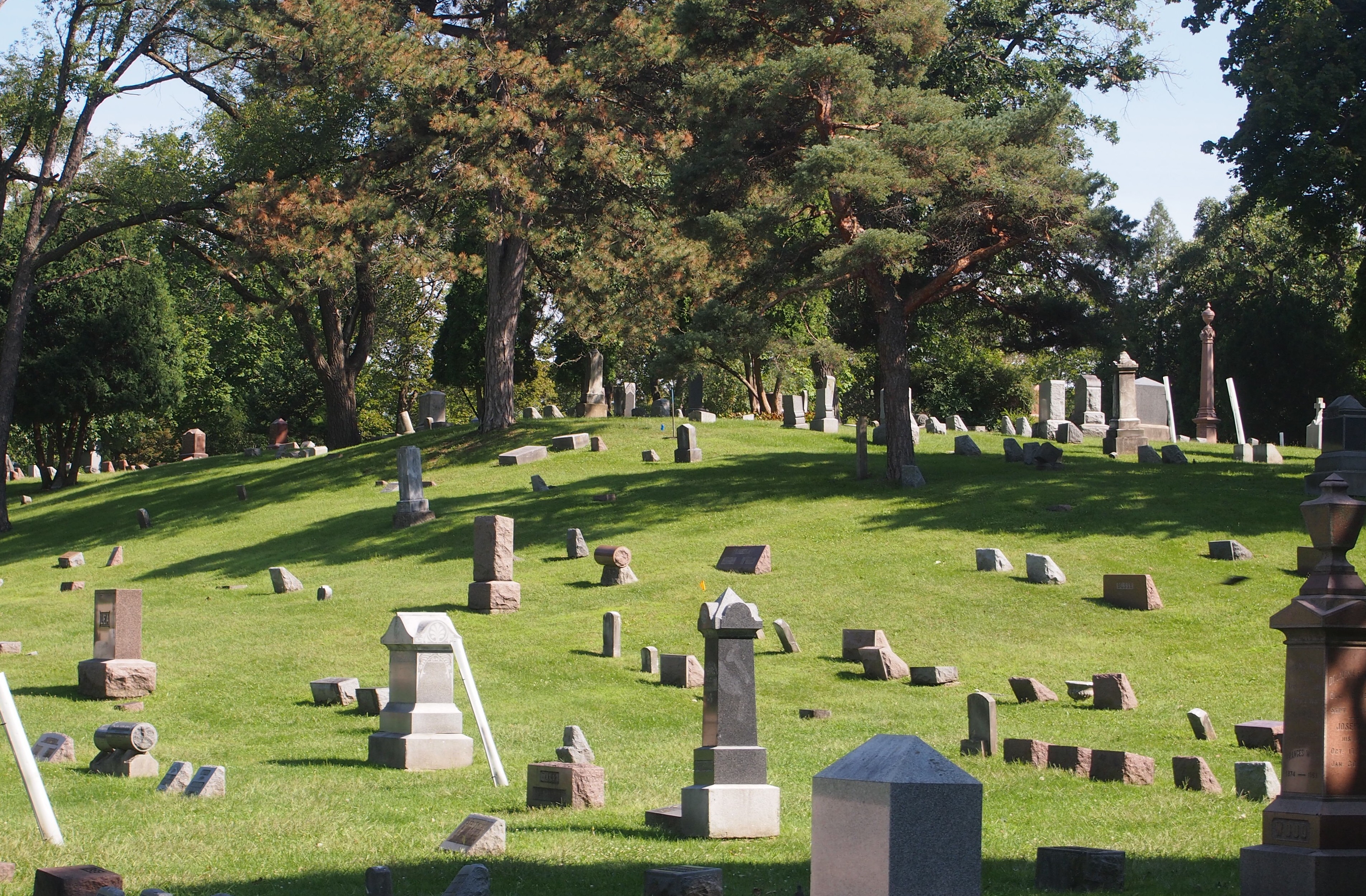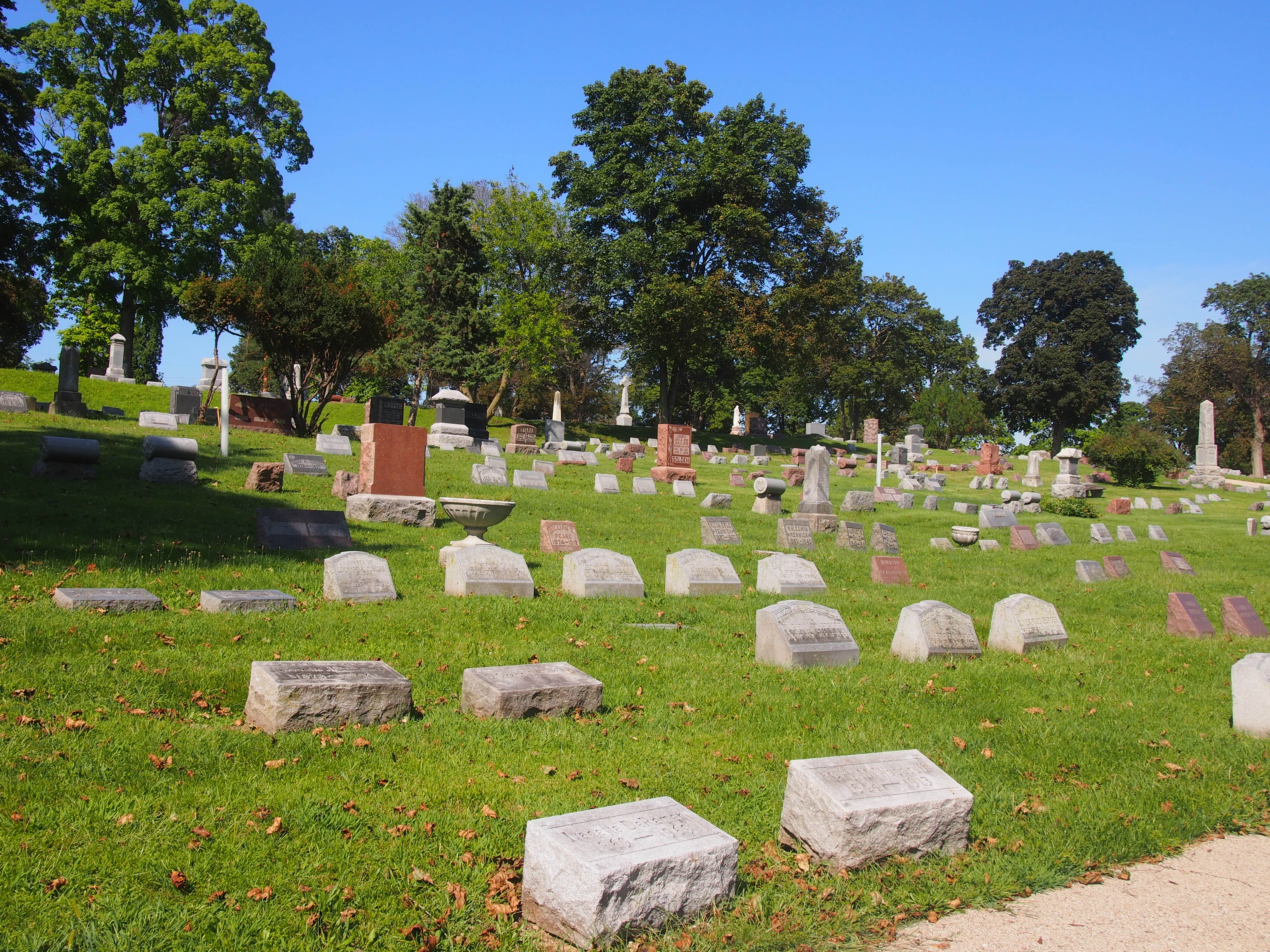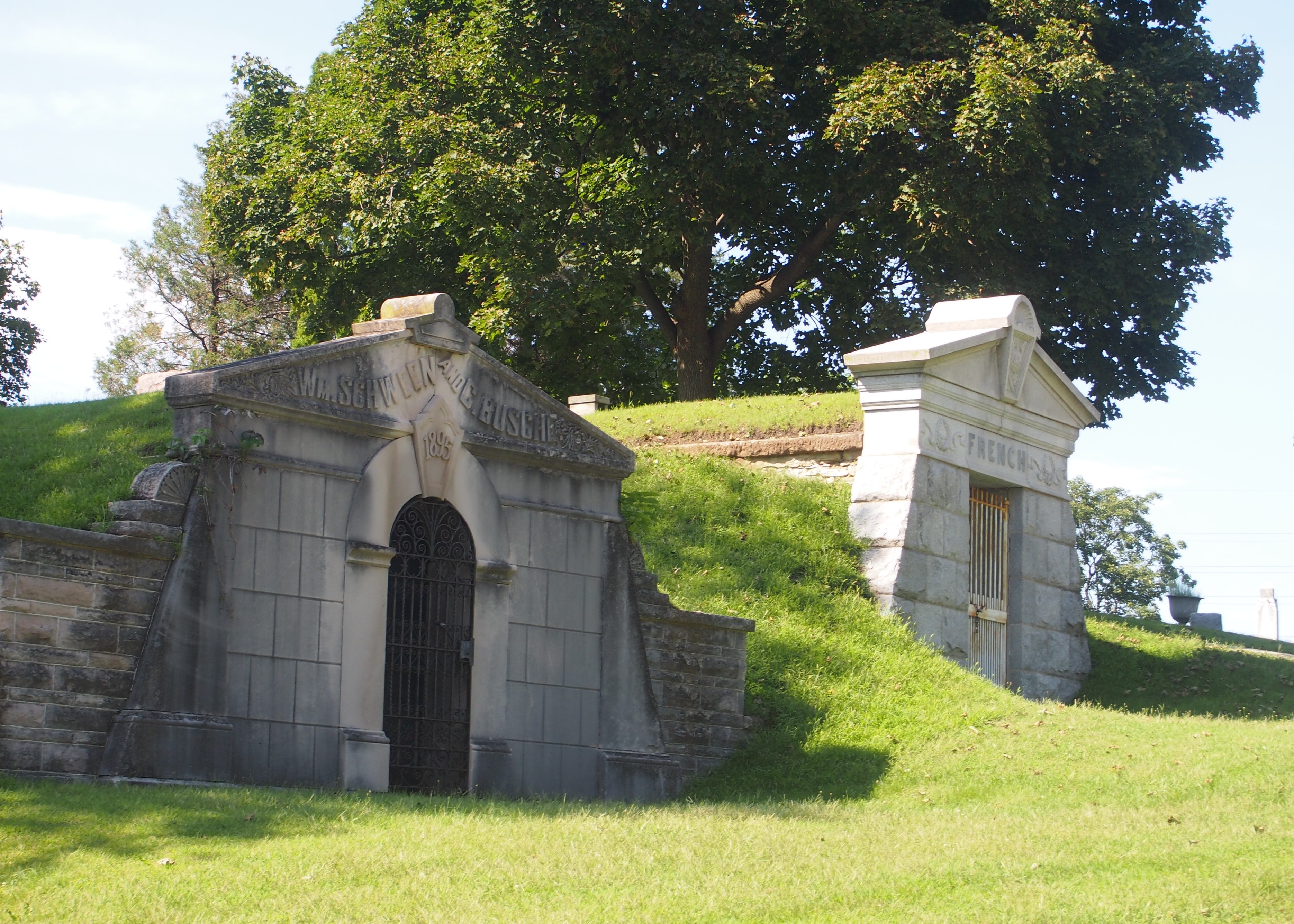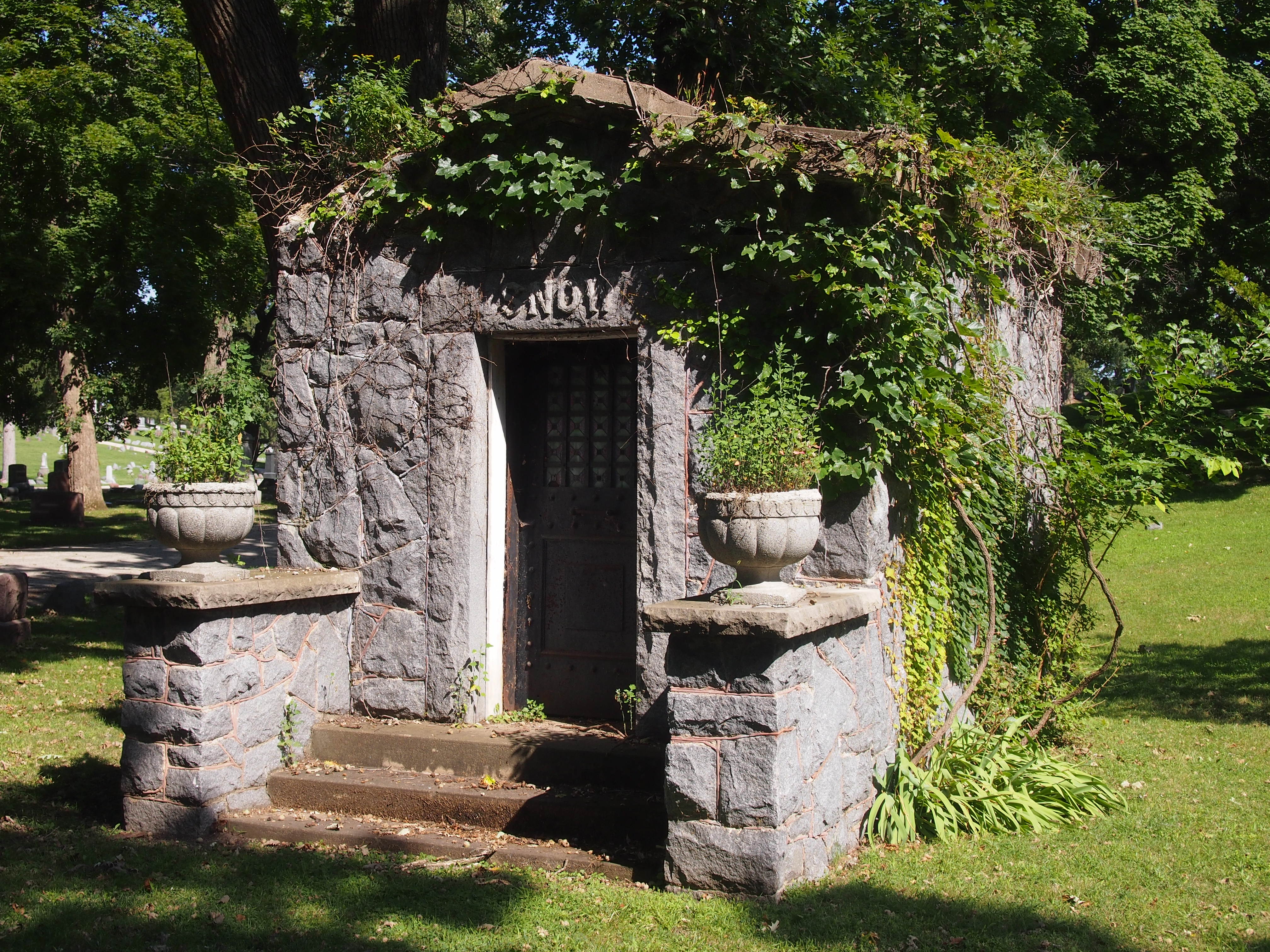At Costco the other day, I was waiting in line at the keep-’em-in-the-store food service window, which is across from the row of check-out stands. The line was about eight people deep, and had started to snake toward the check-out stands, partially blocking the flow of people and shopping carts as they headed for the exit.
“Please move the line against the wall,” a Costco employee told everyone in line. It was a reasonable request, and we all moved away from the check-out row. A few seconds later, a man wheeled his cart past us in the line, and said, “Thanks. There’s no more Thermopylae.”
Did he actually say that? I wondered. I decided he had. I didn’t particularly feel like we were holding off a host of Persians, but I chuckled anyway. That’s someone who’s read his Herodotus. Or more likely, watched 300.
I spent some time one warm day recently at the Bluff City Cemetery in Elgin, Illinois, which has been a municipal burying ground since 1889. It’s a large place, 108 acres, and unusually uneven for Illinois terrain. My guess is that as a rolling bluff, the site wasn’t good for much else, so it became the cemetery.

 A lot of mature trees, a lot of stones. Not a lot of funerary art, but I did see some examples, such as this figure, atop a monument to people named Hanson, and holding what looks like a chain attached to an anchor. I’ve read that anchors were early Christian symbols of hope, and are sometimes found on funerary art, though I can’t say I’ve ever seen one before.
A lot of mature trees, a lot of stones. Not a lot of funerary art, but I did see some examples, such as this figure, atop a monument to people named Hanson, and holding what looks like a chain attached to an anchor. I’ve read that anchors were early Christian symbols of hope, and are sometimes found on funerary art, though I can’t say I’ve ever seen one before.
 The cemetery also sports a few burial vaults built into the hillside.
The cemetery also sports a few burial vaults built into the hillside.
 There are some small mausoleums as well. I liked the Snow mausoleum, with its ivy.
There are some small mausoleums as well. I liked the Snow mausoleum, with its ivy.
 The Snows are under a large oak tree, and the entire time I was there it spat acorns at the ground near me.
The Snows are under a large oak tree, and the entire time I was there it spat acorns at the ground near me.